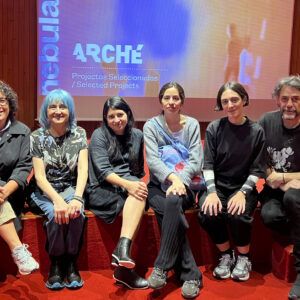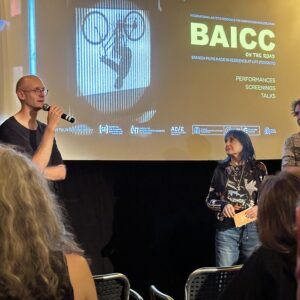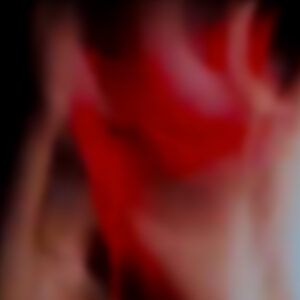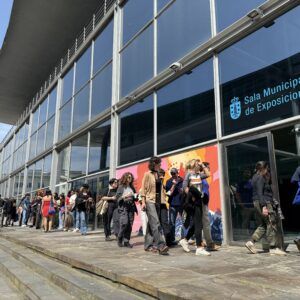Sixty years of Super 8, and another festival dedicating a special place to films made in a format with its own ethics and aesthetics of the kind exuded by the work of the Argentine Daniela Cugliandolo, to whom we are dedicating a programme. We are publishing an interview with her in the book Super 8 Argentino Contemporáneo by Paulo Pécora, by kind permission of the author.
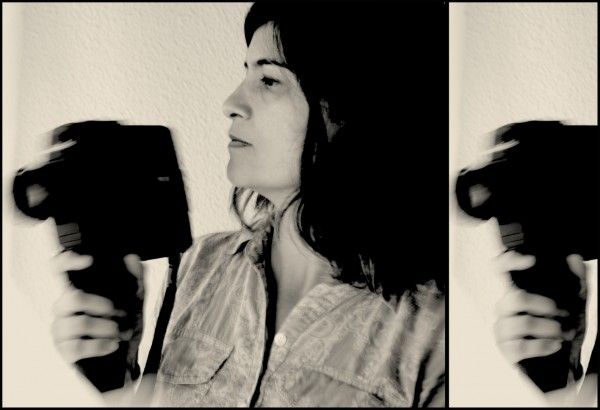
How long have you been working with Super 8 and how did you come across the format?
I used to say it began in 1999, when the Arcoiris laboratory began developing Super 8 in Argentina. It was then that I was able to find a use for that “pointless” camera, still new in its case, which I had kept for a decade because of the beauty of the object. But now I also remember that during those years of waiting, I would sometimes take it out just to see it and look through it. I think the first contact was those looks I took through it.
The first shoot, toying with looking, this time alternating in-camera editing with my boyfriend, we would swap roles, acting and shooting in front of a chessboard. Later I learned and took it as a confirmation of kinship that those images were recurrent in the history of cinema.
The first time as a director, Super 8 was introduced into a video project based on the play I directed that was never premiered, The Maids by Jean Genet. We recorded the characters in off-script scenes with three VHS cameras used by the plastic artists Matías Perego, Analía de Bernardis and myself. Filming in Super 8 was a kind of “bonus track” that served to sum up the journey, the processes of the work, and at the same time for me it was a starting point for a new way of approaching creative work.
What characteristics does the format have, and what are the advantages or aesthetic possibilities it offers for your work?
Almost a square; it’s a machine; it’s mute; it’s a photo in motion. Going over the uses that have historically been made of the format, I think of a father or mother wielding the camera to record their offspring, their home, the holiday landscapes, and the cinema student taking their first steps, or the one with more plastic concerns or a desire to test their point of view, finding the possibility of experimentation because it’s more economically and technically accessible than large-format celluloids (this is my case). And it seems to me that the main characteristic of Super 8 is that without major requirements, it allows you to realise a dream: to make a film.
How do you see the Super 8 film scene in Argentina?
It seems that there are several of us who have taken up the format and we are going on and on. From what I’m seeing, I’d say it retains an important place within experimental cinema and an inescapable link with auteur cinema. Via its difference, it feeds the cinema scene in general.
What aesthetic and narrative expectations or concerns do your works address?
For me, making films is about recreating an encounter, a connection that exists with the person who becomes the actor/character; that’s the motor that turns on the camera. Then, the biased narrative and shared aesthetic whims, I would say, give a fictional form to that affection. I could divide my work into three stages. The first was in Argentina from 1999 to 2001, with short films technically structured using only one reel and in-camera editing, shot in a realistic outdoor setting and a neutral indoor setting with a theatrical atmosphere. As a narrative idea, there is the filmed surrealist portrait, the projection made by me in its original format, the sound of electronic music played simultaneously, and an enriching feedback with the audience. The second was in Spain, Italy and France, in 2001 and 2002, with the series Veo doble (I see double), short films edited in-camera and later digitally edited on a double screen, with flat colours, in outdoor settings; a kind of travel diary with electronic music by DUO[GS1] , which was sometimes shown with two Super 8 projectors. The third stage has been in Spain, from 2003 until now, when I have been seeking new creative instances, trying techniques such as filming without looking, filming images that the computer plays, previously recorded by me on video or from videos I find on the Internet; I record the projection in Super 8 with a handheld camcorder or I send the developed film to be digitised, or else I explore the digital version with image and sound. The projections are mostly digital.

